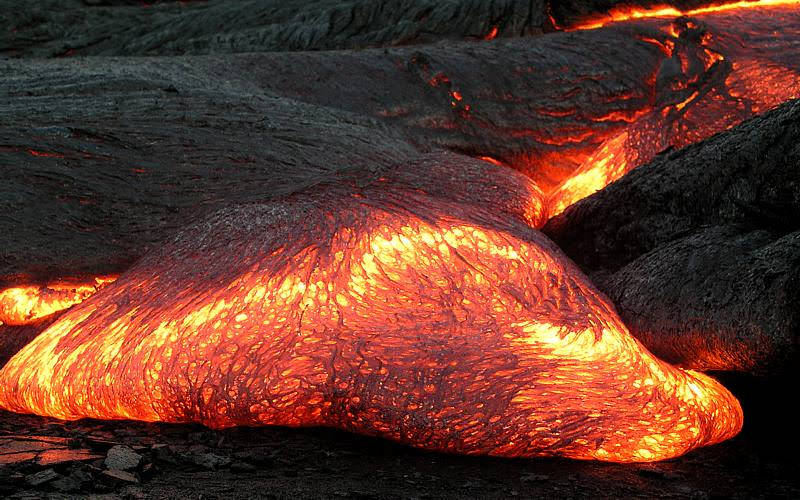Primary rocks are rocks that are formed directly from molten rock, also known as magma or lava. They are also called igneous rocks, which means "fire-formed". Primary rocks have the following characteristics:
They are typically hard, dense, and highly resistant to weathering and erosion. This is because they are formed from molten rock, which solidifies and crystallizes into a dense mass of minerals.
The mineral composition of primary rocks is one of their most defining characteristics. Different types of primary rocks have different proportions of minerals, such as quartz, feldspar, mica, pyroxene, olivine, etc. The mineral composition depends on the chemical composition and temperature of the magma or lava from which they are formed.
The texture of primary rocks is another important characteristic. The texture refers to the size, shape, and arrangement of the mineral crystals in the rock. The texture depends on the rate and location of cooling of the magma or lava. Faster cooling results in smaller crystals, while slower cooling results in larger crystals.
There are two main types of primary rocks: intrusive and extrusive.
Intrusive rocks form when magma solidifies below the surface of the earth. Because they cool slowly, they tend to be more coarse-grained and have a more crystalline texture. Examples of intrusive rocks include granite, gabbro, and diorite.
Extrusive rocks form when lava solidifies on or near the surface of the earth. Because they cool quickly, they tend to be more fine-grained and have a more glassy or vesicular texture. Examples of extrusive rocks include basalt, rhyolite, and pumice.
Some primary rocks can also have a mixed texture, such as porphyritic or pyroclastic.
Porphyritic rocks have both large and small crystals, indicating that they cooled at different rates. The large crystals are called phenocrysts, and the small crystals are called groundmass. Examples of porphyritic rocks include porphyritic basalt and porphyritic granite.
Pyroclastic rocks are composed of fragments of volcanic material that are ejected during eruptions. They have an angular and irregular texture. Examples of pyroclastic rocks include volcanic breccia and tuff.
Primary rocks have many uses in various fields, such as:
Construction: Primary rocks are often used as building materials, such as granite for countertops, basalt for paving stones, and pumice for lightweight concrete. They are also used as aggregates for concrete and asphalt, and as decorative stones for landscaping and monuments .
Geology: Primary rocks provide valuable information about the geological history and processes of the earth. They can reveal the origin, composition, and evolution of the magma or lava from which they are formed, as well as the tectonic setting and volcanic activity of the region. They can also be used to date geological events using radiometric methods .
Industry: Primary rocks are sources of many important minerals and metals, such as copper, iron, gold, silver, tin, etc. They are also used for making ceramics, glass, abrasives, and refractories. Some primary rocks have special properties that make them useful for specific purposes, such as obsidian for surgical blades, granite for curling stones, and pumice for polishing.
Some of the most common primary rocks are:
Granite: A coarse-grained intrusive rock composed mainly of quartz, feldspar, and mica. It is widely used as a building and decorative stone. It has a light color and a speckled appearance.
Basalt: A fine-grained extrusive rock composed mainly of plagioclase and pyroxene. It is the most common rock on the earth's surface, forming most of the oceanic crust and volcanic islands. It has a dark color and a smooth or vesicular texture.
Rhyolite: A fine-grained extrusive rock composed mainly of quartz and feldspar. It is formed from highly viscous lava that cools quickly. It has a light color and a glassy or porphyritic texture.
Gabbro: A coarse-grained intrusive rock composed mainly of plagioclase and pyroxene. It is similar to basalt but cools more slowly and forms larger crystals. It has a dark color and a granular texture.
Pumice: A light-weight extrusive rock composed of volcanic glass with many gas bubbles. It is formed from frothy lava that solidifies rapidly. It has a light color and a vesicular texture. It can float on water and is used as an abrasive and a soil conditioner.
